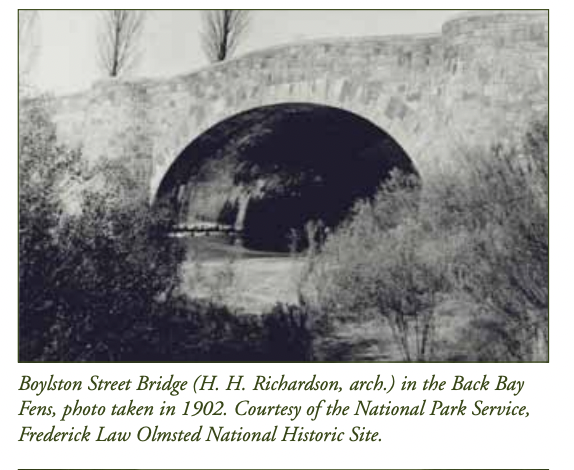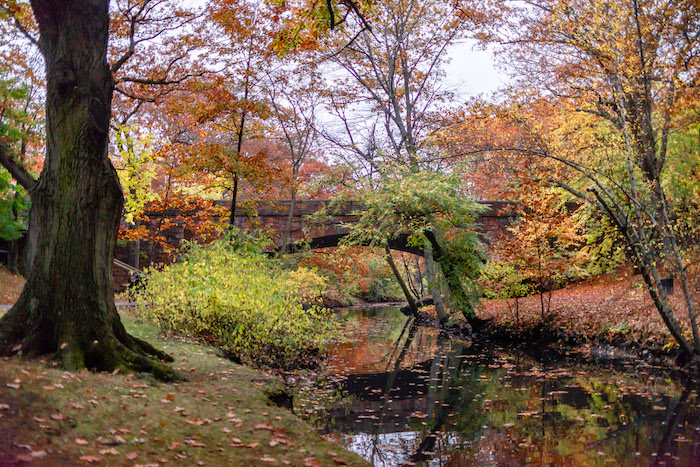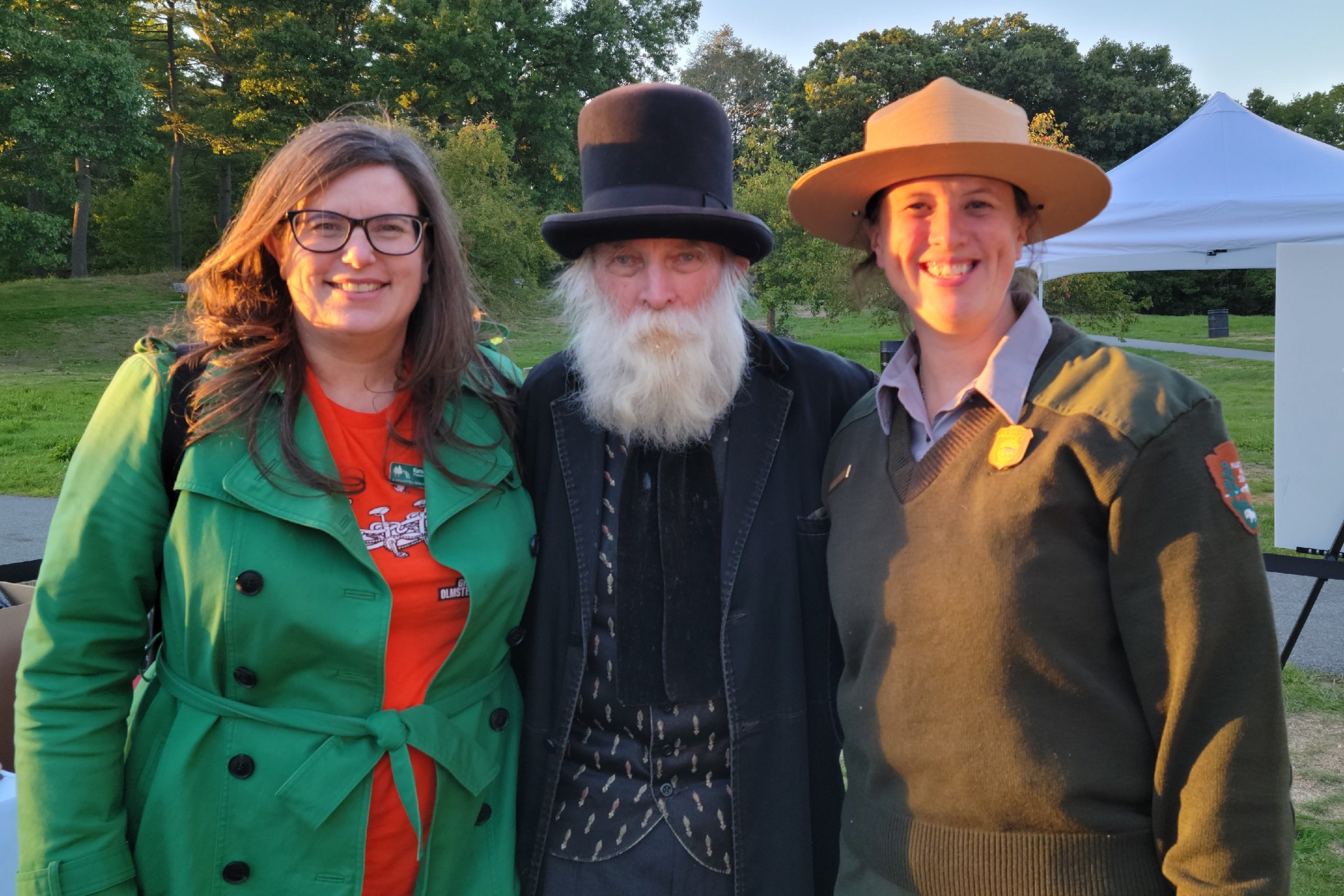
Adjacent to the Emerald Necklace in Boston, Wentworth Institute of Technology recently marked Frederick Law Olmsted’s 200th birthday by launching a multidisciplinary humanities elective exploring his achievements, motivations, and legacy. “Wentworth and the Back Bay Fens” took twenty-five undergraduates into the Necklace in the fall 2022 semester to experience Olmsted’s design principles first-hand and to embrace a more relational sense of responsibility for the community and environment right outside our doors.
Wentworth was founded in 1904, at a time when many other vibrant cultural institutions also came into being in the vicinity of Olmsted’s Muddy River project. Originally a school for the mechanical arts, Wentworth now offers degrees in engineering, design, technology, and management and continues to prioritize pragmatic, experiential learning. Our proximity to the Back Bay Fens has offered the perfect vantage point for engaging with Olmsted’s writing, from the importance of what we would call green infrastructure and the restorative power of nature contact to his pronouncements that urban parks are essential to democracy. We accessed excerpts of his book on his tour of England, his dispatches from the South, and of course his designs for the park system here in Boston. Scaling up to Olmsted’s advocacy for large national reserves, various materials (archival periodicals; recent fiction and essays; the poetry of indigenous and Black writers) helped students apprehend narratives of “nature” and “wilderness” that continue to influence our response to the natural environment—and to global warming. They also researched the displacements that predated some Olmsted landscapes, pursuing what makes land “public” or “private” as, post-pandemic, access to open space has become a more readily apparent index to patterns of exclusion.
We ventured into the parks of the Emerald Necklace on multiple occasions and in all kinds of weather. Matt Eddy of the Muddy River Maintenance and Management Oversight Committee led a tour that allowed students to appreciate the waterway’s 21st-century restoration as an engineering feat and also as a vital part of the city’s well-being. Class members fanned out across the park system for a special Olmsted200 festival in September, and we enjoyed a work outing with Alyx Britton of the Emerald Necklace Conservancy, learning more about invasives and cleaning up trash. Some students also contrasted Olmsted’s design principles with other Boston parks that were not designed by his firm, such as the Southwest Corridor. Deep into the fall, students visited the Victory Gardens after harvest. Throughout the semester, some students explored and observed in small teams; sometimes we moved as a group; and many brought along family and friends as well.
We supplemented these outings with a site visit to the Museum of Fine Arts, which sits between our campus and the Emerald Necklace Conservancy’s Shattuck Visitor Center, to engage with painters of the American West whose work roughly coincided with Olmsted’s time in California. We also enjoyed a special tour at the Boston Public Library, where geographer Ian Spangler led us through the Leventhal Map Center’s exhibit “More or Less in Common: Environment and Justice in the Human Landscape,” which activated themes that emerged during our class, most notably, the history of redlining, disparate rates of air and water pollution, and mapping technology itself.
Situating Olmsted’s work in a broader sweep of American history sparked research and writing across a wide range of topics (controversies over resource extraction in national parks and monuments, for example, and the power of the arts to shape and challenge narratives of national identity). The final project of the semester was a historically-informed collaboration linking the Victory Gardens of the Back Bay Fens to our own newly-renovated dining hall. When we accessed archival images from the Victory Garden movement in Boston during the early twentieth century, some students were especially struck by government-issued posters decrying the waste of food. Understanding that food waste now threatens our well-being in very different ways, teams undertook a “weigh-the-waste” campaign in partnership with the dining facility and our campus Sustainability Committee. At the same time, other teams created a context for that data by researching, for example, connections between food waste and greenhouse gases and local regulations for composting. One team created a curriculum around food waste for use in elementary school classrooms, and another situated our work in a growing body of knowledge about the efficacy of experiential learning not just in engineering and design classes (Wentworth’s main focus) but in the humanities and social sciences as well. Of course, we regard our time in the Emerald Necklace as experiential learning of a most enjoyable kind.
Mitigating food waste on our own campus might seem to have taken us a distance from Frederick Law Olmsted! And yet we remember his years as a “scientific farmer,” and after all, understanding the work of this remarkable and influential figure helps us to understand the past, present, and future of our campus.
Cynthia Schoolar Williams, Associate Professor, School of Sciences and Humanities, Wentworth Institute of Technology in Boston, MA.











